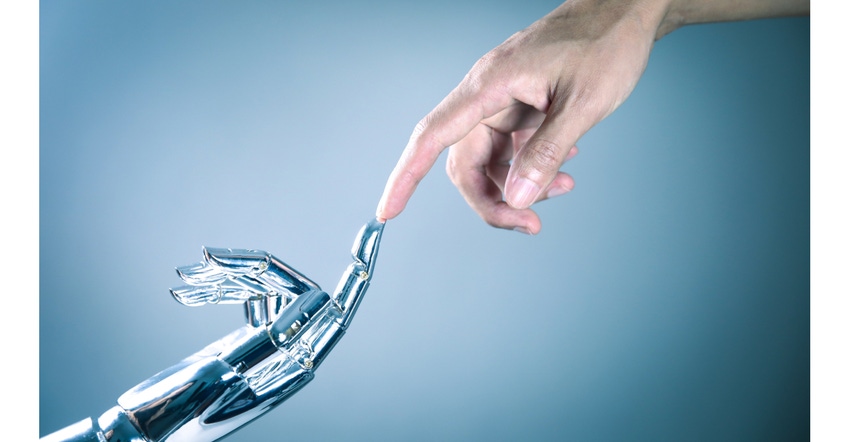Can Robots Help Solve the Supply Chain Disruptions?
Let’s look at how far we’ve come with autonomous robots in manufacturing to see what role they can play in the supply chain of the future.

Over the last several years, advancements in robots and automation have left me with questions.
Will robots:
• Eliminate the need for people?
• Displace certain industries like workman’s comp attorneys and line workers?
• Be the answer to supply chain disruption?
The ongoing supply chain disruption.
Called a shop-from-home binge gone wrong, one of the many, many lingering effects of the pandemic was the utter failure of the supply chain. Yet what was considered a huge story in late 2021, as evidenced in this piece on “60 Minutes,” is relatively quiet now, even though it is far from over. In fact, in June 2022, an economist at the University of Rochester claimed that this is theworst supply chain issue in 50 years.
For me, my clients, and my FORCEpkg team, supply chain issues have touched everything we do: it affects margins, timelines, product launches, product availability — you name it. So even though I walked the sacred halls of McCormick Place during Pack Expo last fall marveling at the futuristic nuances the automated machines and robots provided, I realized that the suggestions made by all those sci-fi movies might not be far off: maybe robots will be our saving grace from this supply chain mess.
So how can they help?
Autonomous robots are making their mark with manufacturers.
Robots are no longer the stuff of science fiction. In fact,Boston Dynamics (a spin-off of MIT), has a humanoid robot called Atlas. It features an advanced control system and 3D-printed, lightweight hardware that enables it to run, jump, balance, and even do a backflip with ease and agility. According to the company’s website, “Atlas’s advanced control system and state-of-the-art hardware give the robot the power and balance to demonstrate human-level agility.”
The uses in manufacturing are boundless. The use of Atlas in perilous situations that endanger warehouse workers — the heavy lifting, the shifting of materials from high to low, even perhaps robots taking the helm of driving long-distance rigs — Atlas can help alleviate an innumerable amount of workplace injuries.
So where is this technology going?
The future of robotic technology.
The spike in interest in tech innovations comes at a time when quitting work seems to be a significant trend, with nearlyfour million Americans walking away from their jobs in 2021 alone. Autonomous robots are poised to see rapid growth in manufacturing, assembly, and warehousing, among many other industries.
Autonomous robots,according to Deloitte, are transforming the supply chain in a number of ways:
• They improve both the speed and accuracy of operations, as evident in warehousing and manufacturing.
• They add efficiency when working side-by-side with humans.
• They lessen the risk of injury in hazardous environments.
Autonomous robots are posed to play a significant role in the supply chain of the future by helping companies:
• Decrease long-term costs;
• Provide labor and utilization stability;
• Increase worker productivity;
• Reduce error rate;
• Reduce frequency of inventory checks;
• Optimize picking, sorting, and storing times;
• Increase access to difficult or dangerous locations.
Robot reality check.
While robots are well established in manufacturing, we still have some distance to go before they dominate our workforce. The LOL YouTube video below, “Boston Dynamic Robot Fails,” shows human-like robots in hilarious pratfalls, replete with silly music and sound effects. But the fails are real, and the potential business disruption and threat to humans who make physical contact with an out-of-control robot makes me wonder if those worker’s comp attorneys won’t be salivating.
“Randobot” is another fun YouTube video (watch below) that opens with a guy sitting on his sofa reading the paper. A robot approaches holding out a soda can. When the guy tries to take the can, the robot pulls it back and then stumbles and falls. Next up is a girl sitting at the breakfast table while a robot tries to fill her cereal bowl with Cheerios. The cereal goes everywhere but in the bowl. It picks up the milk and pours it all over the table, and finally holds the empty spoon to her mouth. One reviewer summed it up nicely, “If a robot can’t get Cheerios in a bowl, it’s unlikely to become sentient, hook up with SkyNet, and take over the world anytime soon.”
Supply chain update.
In mid-November 2022, theNational Carriers’ Conference Committee announced that the Brotherhood of Teamsters had rejected the proposal for a contract. This contract dispute was thought to potentially disrupt the national supply chain and cost upwards of $2B. Although President Biden and Congress blocked the strike in late January, rail workers continued their fight for better conditions — and got them.
While this issue seems subdued for now, it is likely far from over. Perhaps the robots of the not-so-distant future can help improve worker conditions in other industries.
Stay tuned for more on this.
Tom Newmaster has more than 25 years of experience in branding and package design for consumer packaged goods. From 1998 to 2016, he led creative and won awards for The Hershey Co., Pfizer, Stoner Car Care, and Zippo. He has helped launch new products across multiple categories including fresh produce, frozen food, confectionery, household cleaning, and nutritional supplements, to name a few. In 2017, Newmaster started FORCEpkg to take branding, design, and innovation to the next level, and he has become a leading voice in the branding and packaging industry, writing for top trade and mainstream business publications.
Known as “Mr. Reality Check,” Newmaster has become a unique voice for his industry. Calling out the truths in popular narratives, he tackles everything from packaging trends and sustainability to packaging’s role in pollution and praising innovators.
About the Author(s)
You May Also Like




